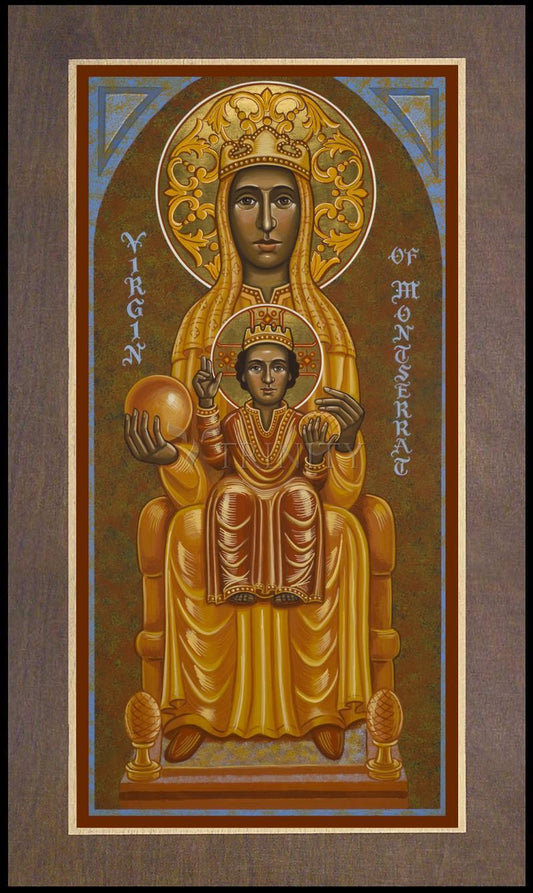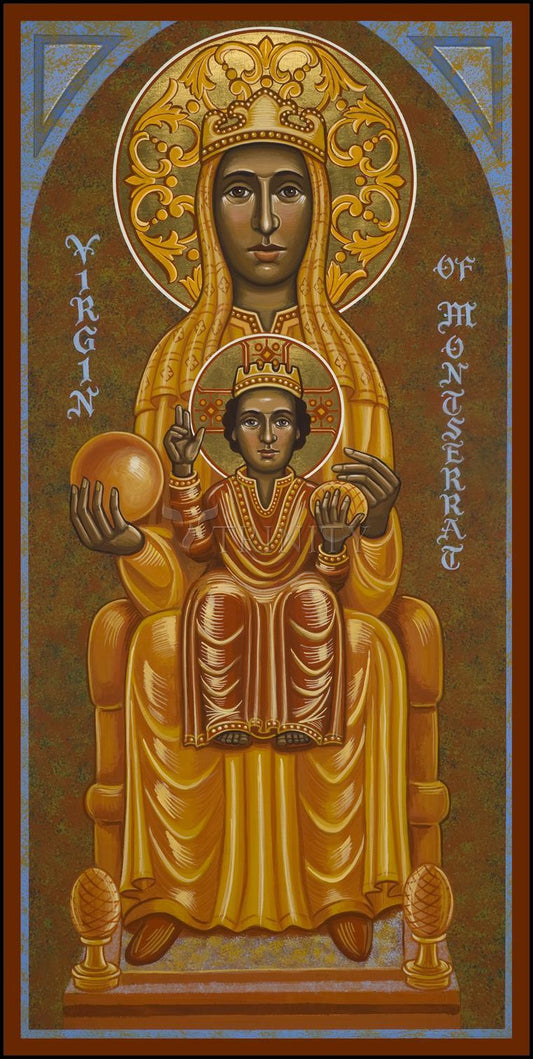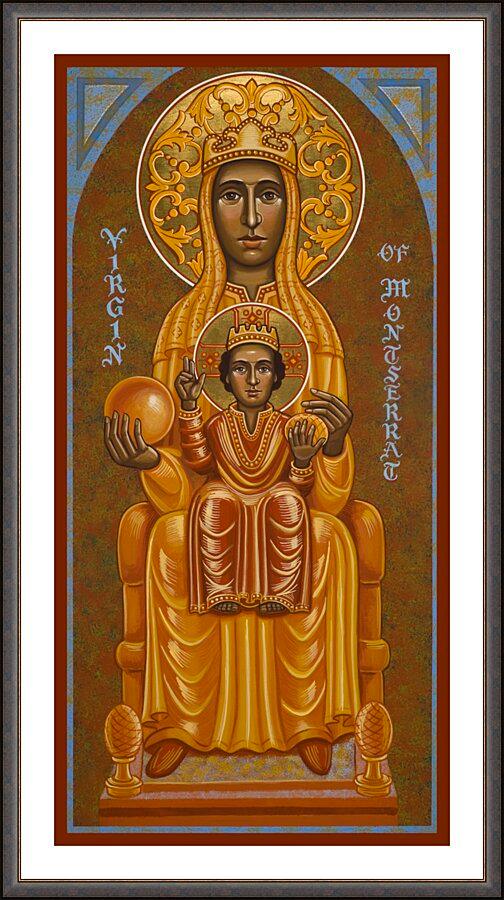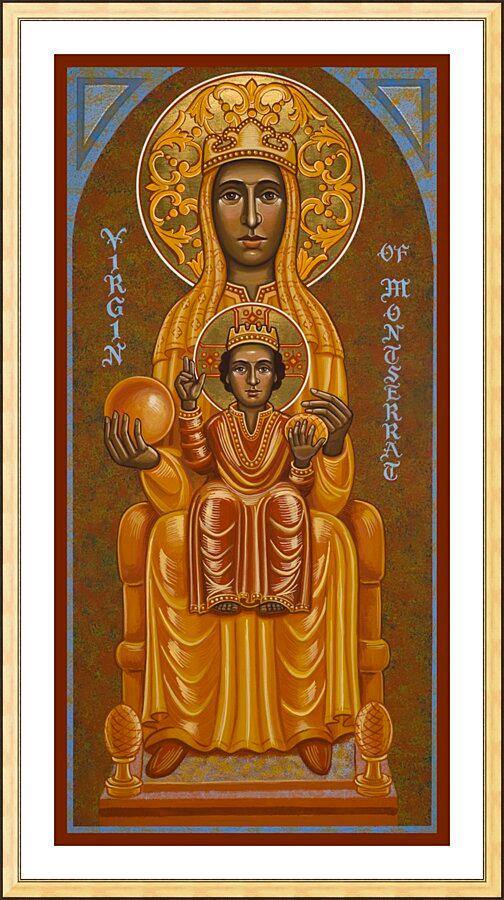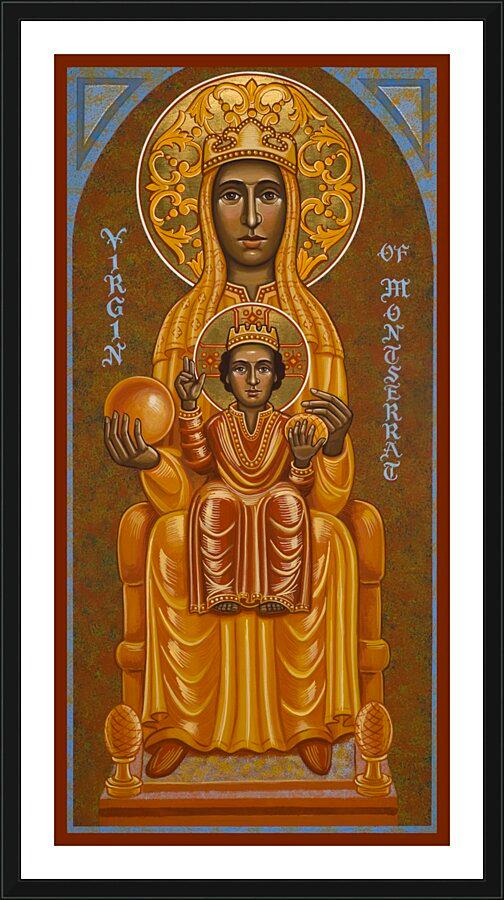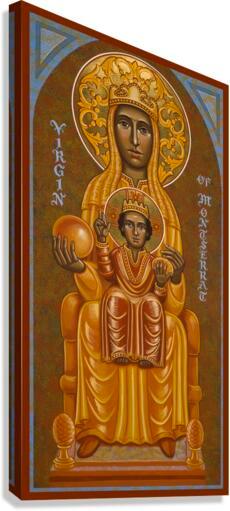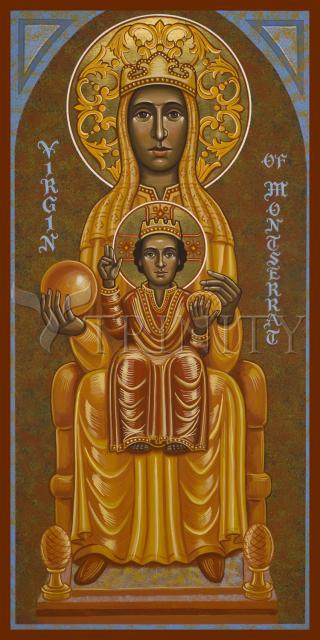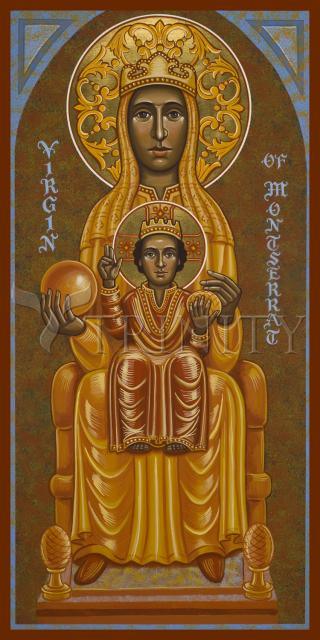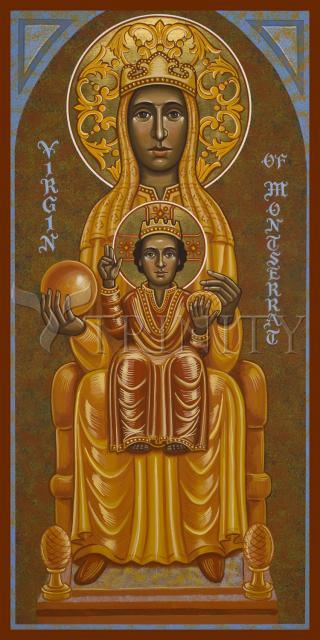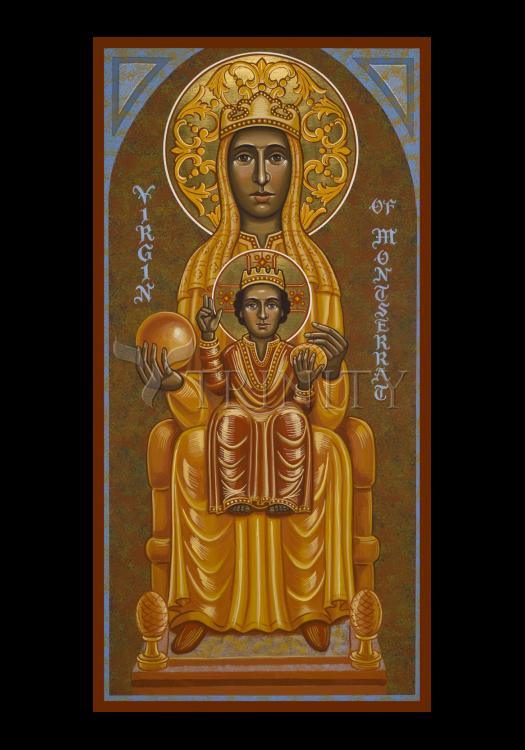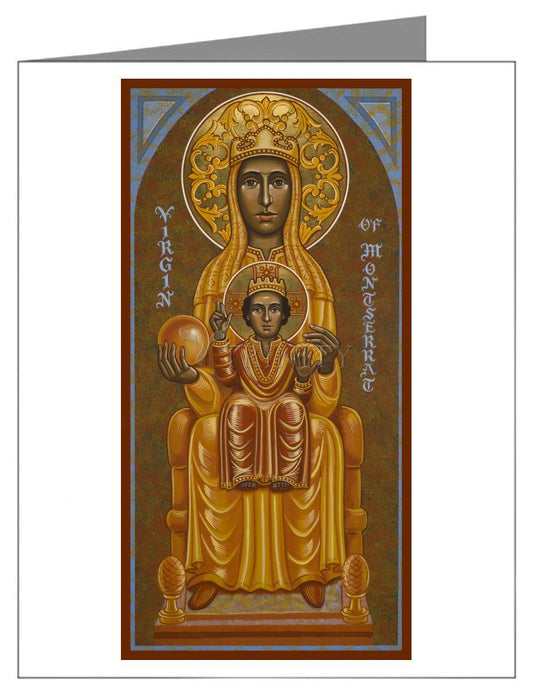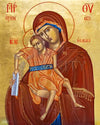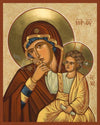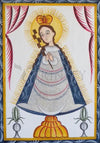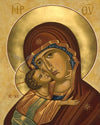Blackened by candles that burned before the statue day and night this particular image dates back to at least the twelfth century. St. Ignatius of Loyola made an annual pilgrimage to Montserrat as have a million or more pilgrims every year in modern times.
The mountain named Montserrat rises 20 miles northwest of Barcelona, in the region of Catalonia, which takes it names from the Spanish, Catalan, for "sawn mountain" probably because its rock outgrowths seem to be the teeth of a saw from a distance. These most unusual lofty cone-shaped jags are almost perpendicular. The highest cone rises to a height of nearly 4,000 feet, while the circumference around the entire base of the mountain is measured at about 12 miles. The church which contains the miracle-working statue of the Madonna and Child sits about halfway up the mountain.
According to tradition, the miraculous image was first known as La Jerosolimitana (the native of Jerusalem), since it is thought to have been carved there in the early days of the Church. The statue was eventually given to St. Etereo, Bishop of Barcelona, who brought it to Spain.
In the seventh century, when Saracen infidels invaded Spain, the Christians of Barcelona heroically defended it for three years until defeat appeared imminent. Knowing that they could hold out no longer, they decided to take their treasured image of Our Lady to a secret, safe place. Quietly, with the knowledge of the Bishop and the Governor of the city, a group brought the statue to Montserrat, placing it in a small cave, April 22, 718. A complete account of the origin of the miraculous image, the cause of its removal and the place of its hidden security were recorded and in the archives of Barcelona.
Even though the location of the statue was eventually forgotten, the people of Barcelona never forgot the holy image for almost 200 years. Then, in 890, shepherd boys from Monistrol, a village at the foot of Montserrat, were sent unbeknown to them to be the source of the discovery of the treasure:
While tending their flocks that night the shepherds were surprised by lights and the sound of singing coming from the mountain. When this happened once again, they reported the situation to their priest, who looked into the matter. He, too, heard the singing and saw the mysterious lights, so he reported this to the Bishop, who also witnessed the same occurrences. At last the statue of Our Lady was discovered in the cave and brought out and placed in a small church that was soon built; this little church developed into the present church that was completed in 1592.



